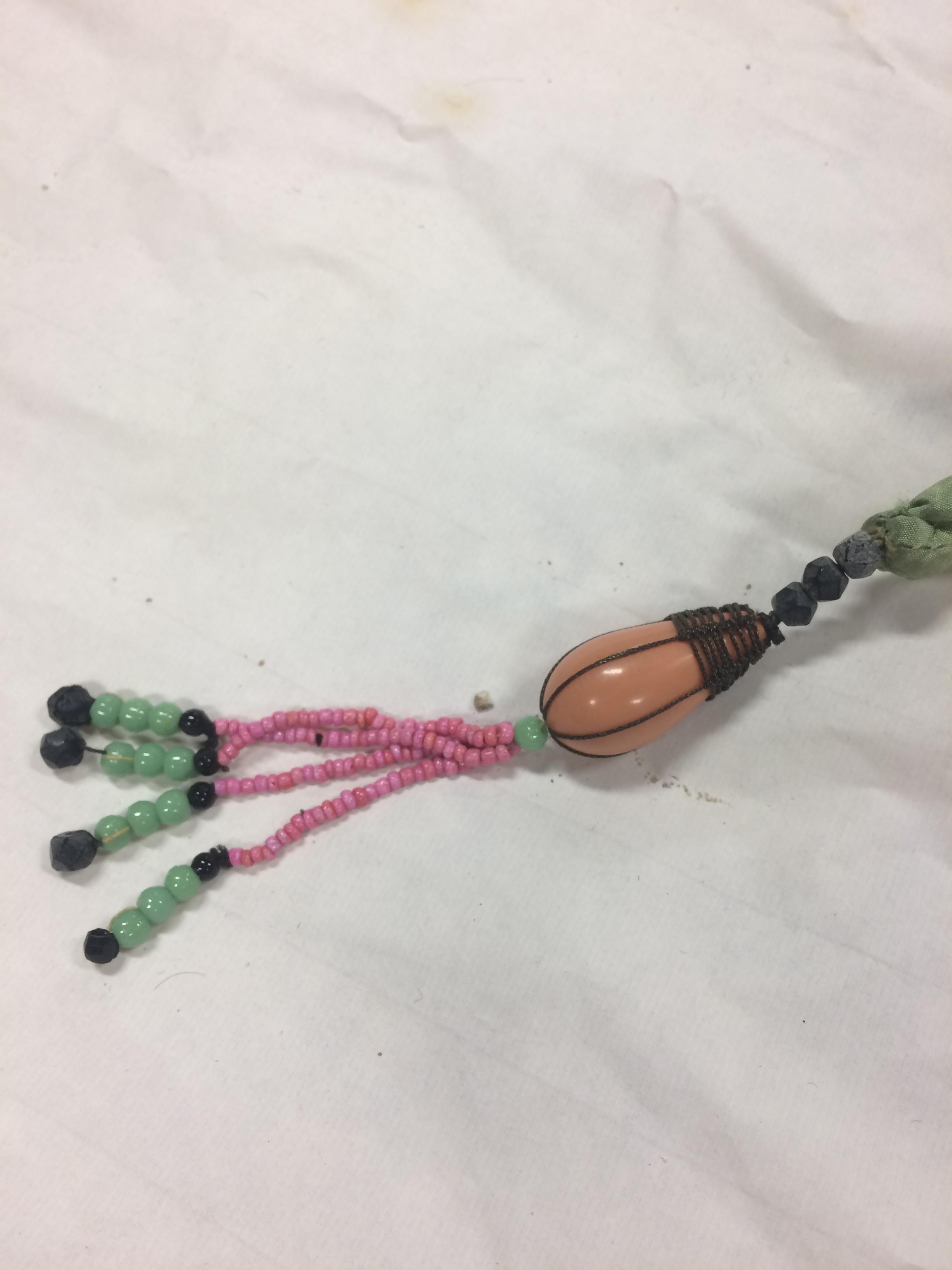Plastic Beads on a 1910s Summer Dress
Whenever we examine garments in the Maryland Historical Society’s costume collection, we pay close attention to their materials, which will impact how we process, store, and display the objects. Dresses made from natural fabrics like linen or wool need to be carefully checked for insect damage. Metal fasteners can stain fabric as they rust or tarnish. And, as this dress from the 1910s demonstrates, modern materials are not immune to changing with age.

This dress (1944.39.15a) is part of a large donation from Georgia Fenhagen, who lived in Baltimore during the early 20th century. The narrow sleeves, bands of lace and embroidery, and tiered straight skirt gathered to a narrow waistband are characteristic of the early 1910s. The fabrics used are white netting and sheer cotton or linen, as well as green silk piping and cord. These lightweight materials were fashionable during the decade, and they would have made the dress comfortable to wear during Baltimore’s hot, humid summers.

Closeup of the dress bodice without the separate cuffs.
A pair of separate net cuffs with green piping add versatility. The skirt has some stains and tears, but the fabric is in good condition overall. This dress’ condition issues instead come from the beaded decoration.

Glass and plastic beads, a popular trim during the 1910s, embellish the dress and attached belt. The black faceted beads used on the belt tassels are likely either celluloid or Bakelite, two early plastics that were common substitutes for ivory and other expensive materials during the early 20th century. The large teardrop-shaped beads are made from another plastic that did not disintegrate in storage. Conclusively identifying the types of plastic used would require analytical testing.

Celluloid is derived from plant fibers, while Bakelite is fully synthetic. Both types of plastic have added chemicals called plasticizers that increase their strength and malleability. Over time, the plasticizers in the black beads have migrated to the surface, producing a white crust that comes loose when touched. The loss of the plasticizers means the beads are more brittle and prone to further deterioration. While the existing changes are irreversible, we can slow the decomposition of the beads by storing the dress in a stable environment. Acid-free tissue paper wrapped around the tassels acts as a barrier between the surfaces of the beads and the skirt fabric. This prevents the crust from rubbing off onto the fabric.


Left: the room in Pratt House where we found the dress. Right: Shelving in MdHS' new textile storeroom.
In Pratt House, the dress and beads were exposed to extreme annual temperature and humidity changes that stressed the materials. Acid from the original cardboard storage box may have also interacted with the plastic and impacted its decomposition. Now that we have rehoused the dress using archival materials, our climate controlled textile storage will help to preserve its current condition and prevent further damage.
1944.39.15a-c. Gift of Ms. Georgie Fenhagen.
Sources and Further Reading:
American Chemical Society. “Leo Hendrick Baekeland and the Invention of Bakelite.” Accessed July 16, 2017. https://www.acs.org/content/acs/en/education/whatischemistry/landmarks/bakelite.html
Getty Conservation Institute. “Conservation of Plastics,” Conservation Practices: The GCI Newsletter 29:1 (Spring 2014). https://www.getty.edu/conservation/publications_resources/newsletters/pdf/v29n1.pdf
POPART. “What Plastics Are In My Collection?” Accessed July 16, 2017. http://popart-highlights.mnhn.fr/identification/what-plastics-are-in-my-collection/index.html
Reilly, Julie A. “Celluloid Objects: Their Chemistry and Preservation.” Journal of the American Institute for Conservation 30:2 (1991): 145-162. http://cool.conservation-us.org/jaic/articles/jaic30-02-003_3.html

